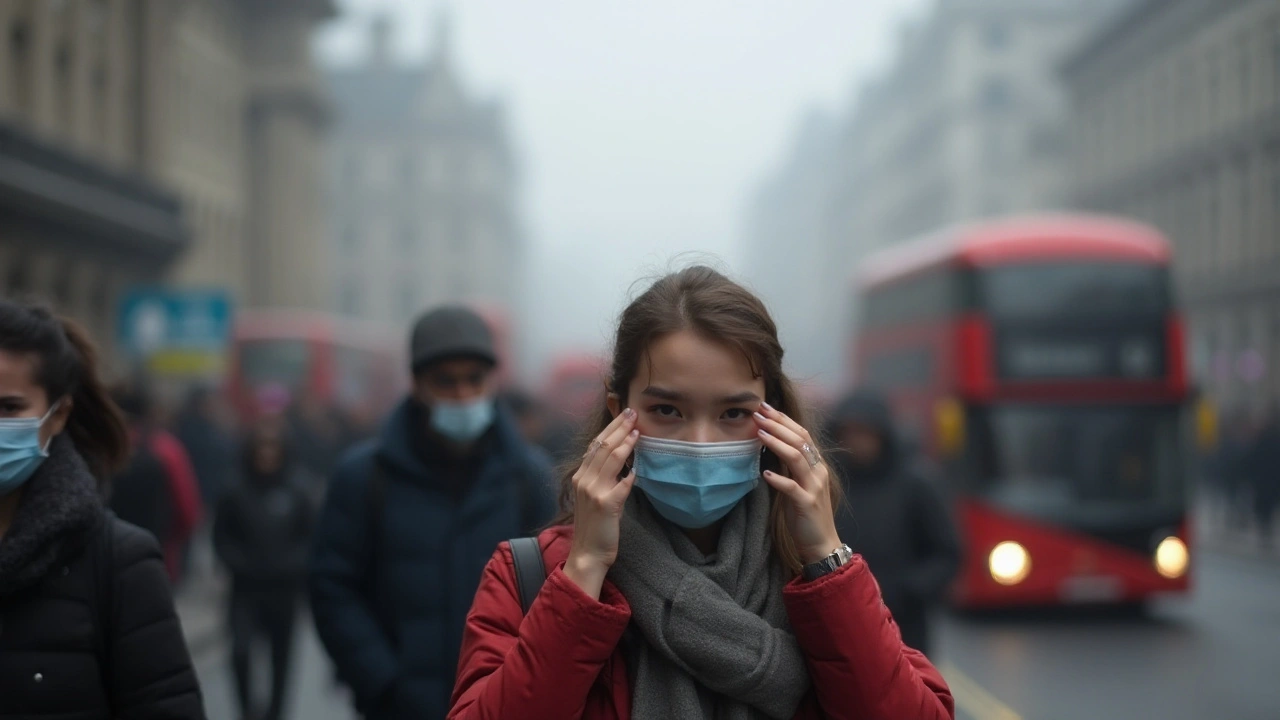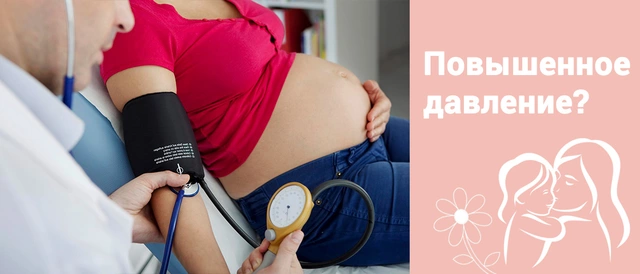
Bacterial eye infections are a common ailment, but many people might not realize how environmental factors can play a significant role in their development. Understanding these factors can be key to both treating and preventing such infections. In this article, we'll delve into how aspects like pollution, water contamination, and seasonal changes can affect your eyes.
We'll start by looking at the basic causes behind bacterial eye infections. Then we'll explore the impact of pollution, followed by a discussion about water contamination. Seasonal changes also play a part, so we'll discuss how different times of the year influence eye infections. Finally, you'll find some practical tips to help keep your eyes healthy and infection-free.
- Understanding Bacterial Eye Infections
- How Pollution Affects Eye Health
- The Role of Water Contamination
- Seasonal Changes and Eye Infections
- Tips for Prevention and Maintaining Good Eye Health
Understanding Bacterial Eye Infections
When your eye becomes infected with bacteria, it can lead to various uncomfortable symptoms and potential complications. Bacterial eye infections can occur in several parts of the eye, including the conjunctiva (the thin, transparent tissue covering the white part of the eye) and the cornea (the clear, dome-shaped surface that covers the front of the eye). Recognizing the types and symptoms can help in timely treatment and prevention of further complications.
Common bacterial eye infections include conjunctivitis, also known as pink eye, and keratitis, which is an infection of the cornea. Conjunctivitis results in redness, itching, and discharge from the eyes, making it highly contagious. Keratitis, on the other hand, can lead to severe pain, blurry vision, and even corneal scarring if not treated promptly. The primary culprits behind these infections are bacteria such as Staphylococcus and Streptococcus.
According to the American Academy of Ophthalmology, "Maintaining proper eye hygiene and prompt medical attention are crucial in managing bacterial eye infections."
These infections often spread through direct contact with contaminated hands, makeup, or solutions for contact lenses. It is vital to follow good hygiene practices to avoid infections. For instance, always wash your hands before touching your eyes, and never share eye makeup or contact lens cases. It is also important to ensure that contact lenses are cleaned and stored properly wherever possible.
Environmental factors play a significant role in the prevalence of bacterial eye infections. For instance, pollutants in the air can land on your eyelashes and eventually make their way into your eyes, providing a breeding ground for harmful bacteria. The same goes for water; swimming in contaminated water, particularly in lakes or poorly maintained pools, can increase the risk of eye infections.
Diagnosing bacterial eye infections usually involves a thorough examination by an eye specialist. Your doctor may take a sample from your eye to identify the type of bacteria causing the infection. Treatment typically involves antibiotic eye drops or ointments to eradicate the bacteria. Timely treatment is crucial; untreated infections can lead to more serious complications, including vision loss.
Understanding the role of bacterial infections in eye health is crucial for effective prevention and treatment. With the right knowledge and practices, you can minimize your risk and maintain healthy vision. And remember, if you ever experience symptoms like persistent redness, swelling, or pain in your eyes, it's always best to consult a healthcare professional.
How Pollution Affects Eye Health
Pollution is a significant concern for our general health, and it can particularly affect our eyes. Various pollutants in the air, such as dust, smoke, and chemicals, can irritate the eyes and make them more susceptible to bacterial infections. Air pollution can lead to conditions like dry eye syndrome, which weakens the eye's natural defenses and makes infections easier to catch.
One key pollutant is particulate matter (PM), tiny particles that can penetrate the eye's surface. These particles can come from sources like vehicle exhaust, industrial emissions, and even wildfires. When these particles enter the eye, they can cause inflammation and disrupt the tear film that protects the eye, creating an easier pathway for bacteria to invade.
Bacterial eye infections, such as conjunctivitis or keratitis, are often exacerbated by high pollution levels. Studies have shown that people living in urban areas with high pollution rates are more likely to experience these infections compared to those in cleaner environments.
"Research indicates that exposure to high levels of PM can increase the risk of eye infections by as much as 20%," says a study from the British Journal of Ophthalmology.
Another area of concern is indoor air quality. Many people underestimate the impact of indoor pollution on eye health. Activities like cooking with certain types of oils, using household cleaners, and even smoking indoors can release pollutants that contribute to eye irritation. This irritation can weaken your eye's ability to fight off bacterial invaders.
One practical tip for reducing the impact of pollution on your eyes is to stay indoors during days with high pollution levels. If you do need to go outside, wearing sunglasses can help shield your eyes from airborne particles. At home, using air purifiers can help maintain a cleaner indoor environment, reducing the risk of eye irritation and infection.
It's important to remember that pollution affects not just the eyes but also the overall health of your body. Taking steps to reduce exposure can therefore have multiple health benefits. In recent years, more people have begun advocating for policies that aim to improve air quality, recognizing the wide-reaching impacts of pollution on health.
Regardless of where you live, being aware of the pollution levels in your area and taking proactive steps can help you maintain better eye health. Simple measures like keeping windows closed on high-pollution days and avoiding outdoor activities can significantly reduce your risk of developing bacterial eye infections.

The Role of Water Contamination
Water contamination is a significant factor in the spread of bacterial eye infections. People often take water for granted, assuming it's safe, but that's not always the case. Contaminated water can come from various sources, including improperly treated swimming pools, natural bodies of water like lakes and rivers, and even tap water in certain regions. These sources can harbor harmful bacteria like Pseudomonas and Staphylococcus, which can lead to severe eye infections.
An alarming number of eye infections have been linked to swimming in contaminated water. For instance, people who wear contact lenses and swim without removing them are at a higher risk. The lenses can trap bacteria against the eye, providing a perfect breeding ground for infections. According to a study published in the Journal of Clinical Ophthalmology, about 60% of eye infections among swimmers can be traced back to contaminated water bodies.
Tap water poses another risk. In many parts of the world, water treatment facilities may not adequately eliminate harmful bacteria. Even in regions where the water is generally safe, aging infrastructure can lead to contamination. For example, if there's a crack in a water pipe, it can allow bacteria to enter the water supply, making it unsafe for activities like washing your face or rinsing contact lenses.
The role of water contamination in developing countries cannot be understated. Many communities rely on untreated water sources for all their needs. According to the World Health Organization, approximately 80% of diseases in developing nations are water-related, and eye infections are a significant part of this statistic. In areas where access to clean water is limited, the rate of bacterial eye infections can be alarmingly high.
Preventing eye infections caused by water contamination involves several practical measures. Firstly, always ensure that any water coming into contact with the eyes is clean. This means using sterilized water for rinsing contact lenses and avoiding swimming in questionable water bodies. For contact lens users, it's crucial to remove lenses before swimming and adhere to proper lens care routines.
Another preventive measure is the installation of water purification systems in homes, especially in areas where water safety is a concern. Simple steps like boiling water before use or investing in a good water filter can go a long way in preventing bacterial infections. Community-level interventions, such as improving water treatment facilities, can also have a substantial impact on reducing eye infections.
Consistent education and awareness campaigns are essential for mitigating the risks associated with water contamination. By informing people about the dangers and promoting proper hygiene practices, we can significantly reduce the incidence of bacterial eye infections. As Dr. Emily Harper, a leading ophthalmologist, states,
“Public awareness and hygiene practices can greatly reduce the prevalence of eye infections caused by contaminated water sources.”
Seasonal Changes and Eye Infections
Seasonal changes can have a bewildering range of effects on our health, and our eyes are not spared. Each season brings its own set of challenges when it comes to eye health, especially in the context of bacterial eye infections. Understanding the links between the seasons and eye infections can help you better prepare and protect your eyes throughout the year.
During the cold months, for instance, the dry air indoors and the chilly winds outdoors can cause significant eye irritation. When the eyes are irritated and dry, they become more susceptible to infections. This is because the natural defenses, which include a watery film over the eye, are compromised. And when you add the fact that many people turn to central heating in the winter, which further dries the air, it’s a recipe for bacterial growth.
On the flip side, spring and summer bring their own set of issues. Higher temperatures and increased humidity can create an environment where bacteria thrive. Additionally, pollen levels shoot up during the spring, causing allergic reactions like red, itchy eyes. This can lead to people rubbing their eyes more frequently, which can introduce bacteria and cause infections. Swimming in contaminated water bodies—which many people do in summer—can also increase the chances of eye infections.
Surprisingly, even autumn has its pitfalls. This season brings a lot of wind, and with it, a lot of dust and debris. These elements can easily get into your eyes and cause irritation. If you are a contact lens wearer, the risk elevates because you might touch your eyes more than usual to adjust the lenses or relieve discomfort. This can facilitate the transfer of bacteria from your hands to your eyes.
Dr. Susan Crowley, an ophthalmologist based in Manchester, explains, "Environmental factors, especially seasonal changes, play a huge role in the prevalence of eye infections. Keeping an eye on weather conditions and adjusting your eye care routine accordingly can be crucial."
Given these seasonal hazards, it is essential to take preventive measures to protect your eyes. Using humidifiers during winter can add moisture back into the air, reducing the dryness that can compromise your natural defenses. In spring and summer, wearing sunglasses can shield your eyes from pollen and UV rays, and using swim goggles can prevent bacteria in water from getting into your eyes. Also, regular handwashing can minimize the risk of transferring bacteria, particularly in autumn when dust and debris are prevalent.
Lastly, special attention should be paid to maintaining good eye hygiene throughout the year. This includes cleaning your contact lenses properly and replacing them as recommended by your eye care professional. Wearing protective eyewear during risky activities like gardening or working in dusty conditions can also go a long way in preventing eye infections.
By being aware of how different seasons affect your eyes and taking proactive steps, you can significantly reduce your risk of developing bacterial eye infections. Incorporating these small changes into your daily routine can make a big difference in maintaining good eye health all year round.

Tips for Prevention and Maintaining Good Eye Health
Preventing bacterial eye infections and maintaining good eye health is crucial, especially when you consider the impact of environmental factors like pollution and contaminated water. A few simple practices can go a long way in keeping your eyes safe from infections.
First, always remember the importance of washing your hands. Hands come in contact with countless surfaces throughout the day, picking up bacteria and other harmful microorganisms. Regular hand washing can drastically reduce the risk of transferring these germs to your eyes. Use soap and water, scrubbing for at least 20 seconds.
Another effective measure is avoiding the touch of your eyes. When you touch your eyes frequently, you increase the likelihood of introducing bacteria. It may seem difficult to break the habit, but it’s essential for your eye health. If you have to touch your eyes, make sure your hands are clean.
Wearing protective eyewear can also serve as a barrier against pollutants and debris. Sunglasses with UV protection are a must, especially if you spend a lot of time outdoors. Not only do they shield your eyes from harmful UV rays, but they also reduce the risk of particles causing irritation.
It’s important to stay hydrated. Drinking plenty of water helps maintain the moisture in your eyes, which is essential for preventing dryness and irritation. Dry eyes can become a breeding ground for bacteria. So, keeping your body well-hydrated aids in maintaining your overall eye health.
For contact lens users, hygiene is non-negotiable. Always wash your hands before handling your lenses and ensure they are cleaned properly using the recommended solution. Never use tap water to clean your lenses, as it can introduce bacteria. Replace your lenses as often as advised by your optometrist.
Limit your exposure to pollutants whenever possible. Living in urban areas often means unavoidable contact with air pollution. Try to stay indoors on days when pollutant levels are particularly high. Additionally, installing an air purifier at home can help maintain cleaner indoor air.
Lastly, regular eye check-ups are a must. These check-ups can help identify potential issues before they become serious problems. Optometrists can provide specific advice tailored to your lifestyle and environmental exposure.
“The eyes are the windows to your soul, and keeping them healthy is of utmost importance,” says Dr. Jane Smith, a leading optometrist.
By adopting these practices, you can safeguard your eyes against bacterial infections and ensure they remain healthy. Prevention is always better than cure, so take these steps seriously to protect one of your most vital senses.
14 Comments
Write a comment
More Articles

How to Buy Cheap Generic Metformin Online Safely
Learn how to safely purchase cheap generic metformin online, verify pharmacy legitimacy, compare prices, and avoid common pitfalls while staying within UK regulations.

The Role of Azilsartan in Treating Hypertension in Pregnant Women
As a copywriter, I've recently come across the topic of Azilsartan and its role in treating hypertension in pregnant women. It's interesting to know that this medication can help manage high blood pressure during pregnancy, ensuring the well-being of both mother and baby. It's essential to maintain a healthy blood pressure, as uncontrolled hypertension could lead to complications such as preeclampsia. However, it's important to consult with a healthcare professional before taking Azilsartan, as they will be able to determine if it's the right treatment option. Overall, Azilsartan seems to be a promising solution for managing hypertension in pregnant women, contributing to healthier pregnancies.

Foreign Manufacturing Quality Issues: How Overseas Production Risks Are Rising in 2025
Foreign manufacturing quality issues are worsening in 2025, with rising FDA drug recalls, material fraud, and unannounced inspections. Learn how overseas production risks affect health products and what companies must do to stay compliant and safe.
Asia Lindsay
September 4, 2024 AT 22:17Great rundown on how the environment can mess with our eyes! 🌿💧 Keeping those pollutants and dirty water out is key, and your tips are spot‑on. I always carry tiny lenses wipes and a mini eye‑wash bottle when I’m out hiking – it’s saved me more than once. Remember, a little preventive care goes a long way, so stay vigilant and keep those peepers happy! 😎